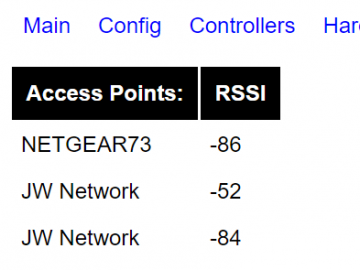Put your skills and experience to the test! Choose from a huge variety of weapons, ammo, equipment, vehicles and transportation to bring down prize game. Travel the globe to hunt in six incredibly detailed natural habitats. Hunt five amazingly realistic species of deer including Axis and European Roe deer. Deer hunter 2005 utorrent.
700 Osuna Rd. NE Albuquerque, NM 87113 505-345-2661 Main office 800-345-8889 Toll free 505-345-6190 Fax.
If I understand your physical setup correctly, there appears to be a conflict between the Arudino IDE and python. Only one program by default can open the serial port at a time (like opening a file for exclusive write). If you just use the python script, don't start the arduino IDE and change the ardiuno to turn on an LED when it gets a msg, that should work (if you serial port assignment is correct). The arduino's diagnostic LEDs should blink with normal serial traffic, but for a single msg you might be missing the short blink.It looks like there is also a conflict between using the serial port between the IDE and between Arduinos. (I don't understand the reason for multiple Arduinos.) Each serial communication pair should be unique. Use the Arduino's SoftwareSerial library to use another pair of digital pins to communicate between the arduinos, not the d0/d1 pins currently used by the FTDI chip to talk to the IDE.Might also include some diagnostic msgs in the python script if it can't open/communicate with the serial port. There is no conflict between the Arduino IDE and python.
That's why we have the complicated setup with the two Arduino's. The Arduino Uno captures the serial messages from the computer game via USB. Then pins zero and one on the UNO are fed to the Mega so that the Mega can essentially peek in on the serial messages being sent from the Uno. The Mega is then the only one that is also connected to the IDE, as the Mega has multiple serials. Serial1 is used to receive the connection from the Uno (the uno spits back everything it receives) and Serial0 is used to print to the IDE.–May 22 '12 at 5:07.
Mega Email Service
Problem:Serial Communication is not always accurate. Sometimes you can notice that in the Serial Monitor, garbage data that you don't want appearing due to the overlapping of two or more pieces of data from Arduino. Similarly, try sending two values quickly and printing the value on the serial monitor, you will notice the same kind of overlapping.
Arduino requires certain delays to work effectively and hence pyserial module is not the best way to use python with Arduino.Solution:1) In your python script use the ser.write or ser.read functions twice! If you find this irritating, use the next solution.2 ) Use ArduinoMasterDelta module(python) to communicate with Arduino which is designed especially to ease the process and remove garbage values with advanced data science and visualization functions.
The link to the pip module isWith this module installed you can use this statement instead: import ArduinoMasterDelta as amdwriteSerial(23, msg=' Whatever you want to send to the serial monitor')# Data will be encoded into bytes and hence use the Serial.readString in Arduino code# and then convert the string to your desired data type!Read the documentation in the above link to learn more!!BTW I'm the developer of this python module. Do share your view about it.
I am trying to driver a stepper motor using an Arduino Mega 2560. There will ideally be two RS232 signals being read into / written from the Arduino, each using male USB 3.0 connectors; one of these is for configuring and controlling the driver of the motor and the other is simply getting an output torque measurement from a torque meter connected to the motor's shaft.
I am simply wondering if Arduino would be able to handle these two functions, and how I might go about connecting each of the two streams of data. I have looked into this question through Arduino documentation, tutorials, and forums for hours, and finally figured I would contribute to the posts on my own.Thank you!- a confused college student. Your main problem seems to be confused by all the information. I will give you some more.The Arduino speaks UART (Universal Asynchronous Receiver Transmitter) with it's Serial interfaces (there are 4 of these on the Mega). This is partly the same protocol as RS232, but it uses TTL logic levels (in this case the levels 5V and 0V), while RS232 has different voltage levels and more lines (like control lines).

When you connect your Arduino to a PC, the PC is not directly talking to the Arduinos chip (here the Atmega2560). Instead every Arduino with a USB port has an extra chip. It will handle the (very complex) USB communication, so that you can see an emulated COM port on your PC. The data, that the PC sends to that COM port, get's transmitted over USB to that extra chip, which in turn will convert it to UART signals and send them to the Atmega2560.All Arduinos, that I know of, have only 1 USB-to-UART chip.

But you can add your own USB-to-UART chip to one of the other Serial interfaces. You can use a FTDI chip, an Atmega16U2 or (if you don't want to program an extra chip) simply an USB-to-UART converter cable/module, which you can buy and use directly by just connecting their pins to the Arduinos Serial pins.By the way, it doesn't really matter here, if you use USB3.0 ports, since chips this small cannot work with speeds that high. All these chips use USB2, more is not necessary, they aren't fast enough.